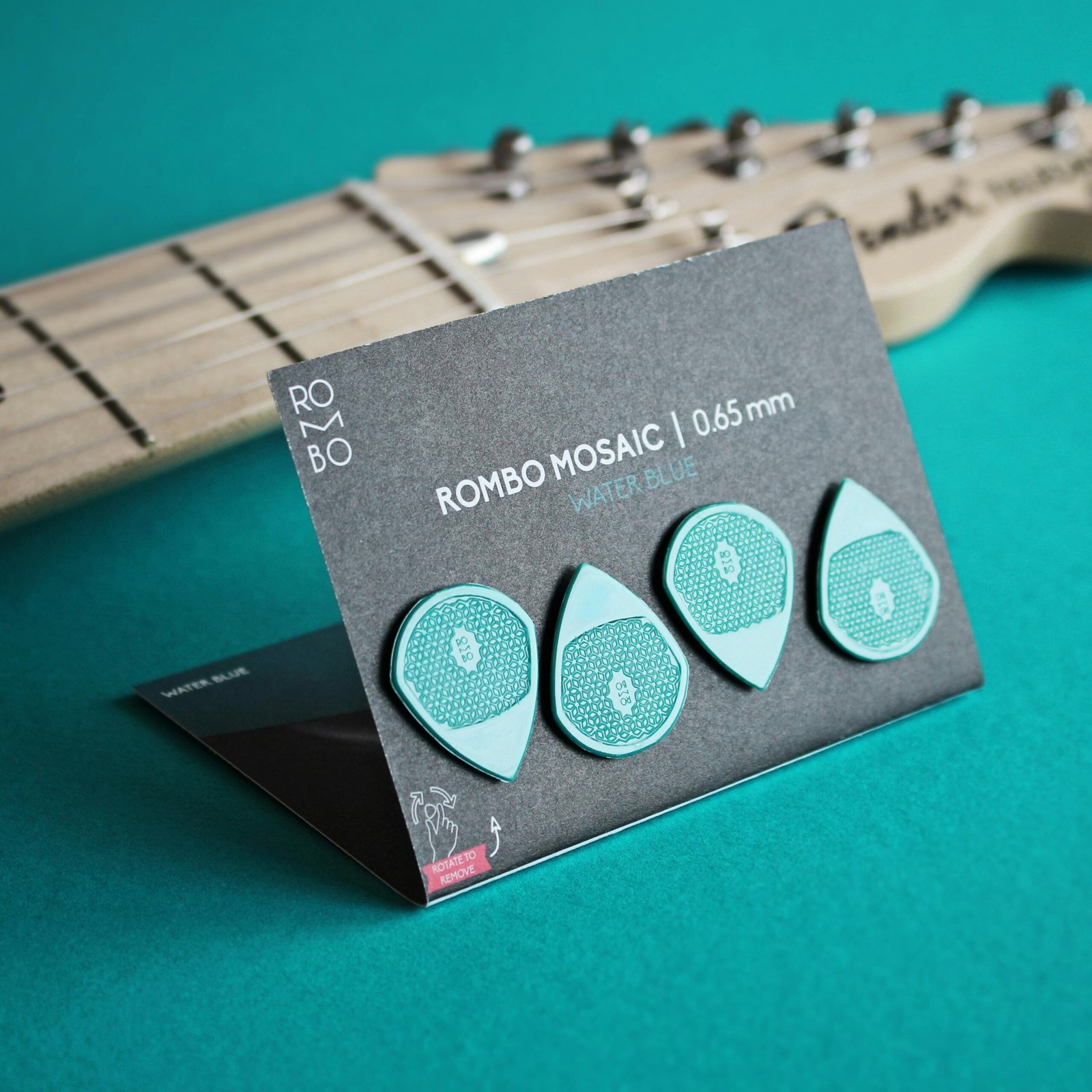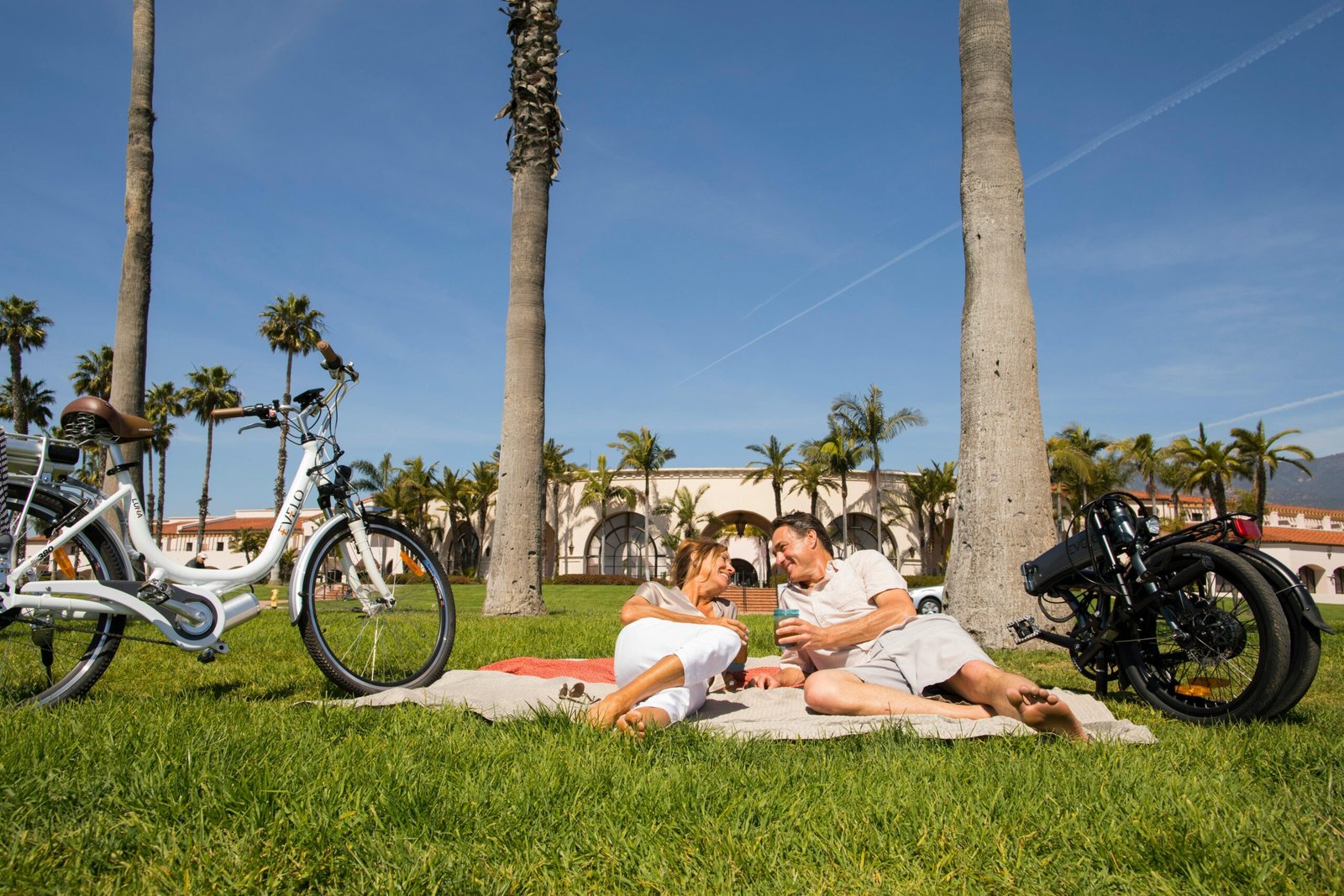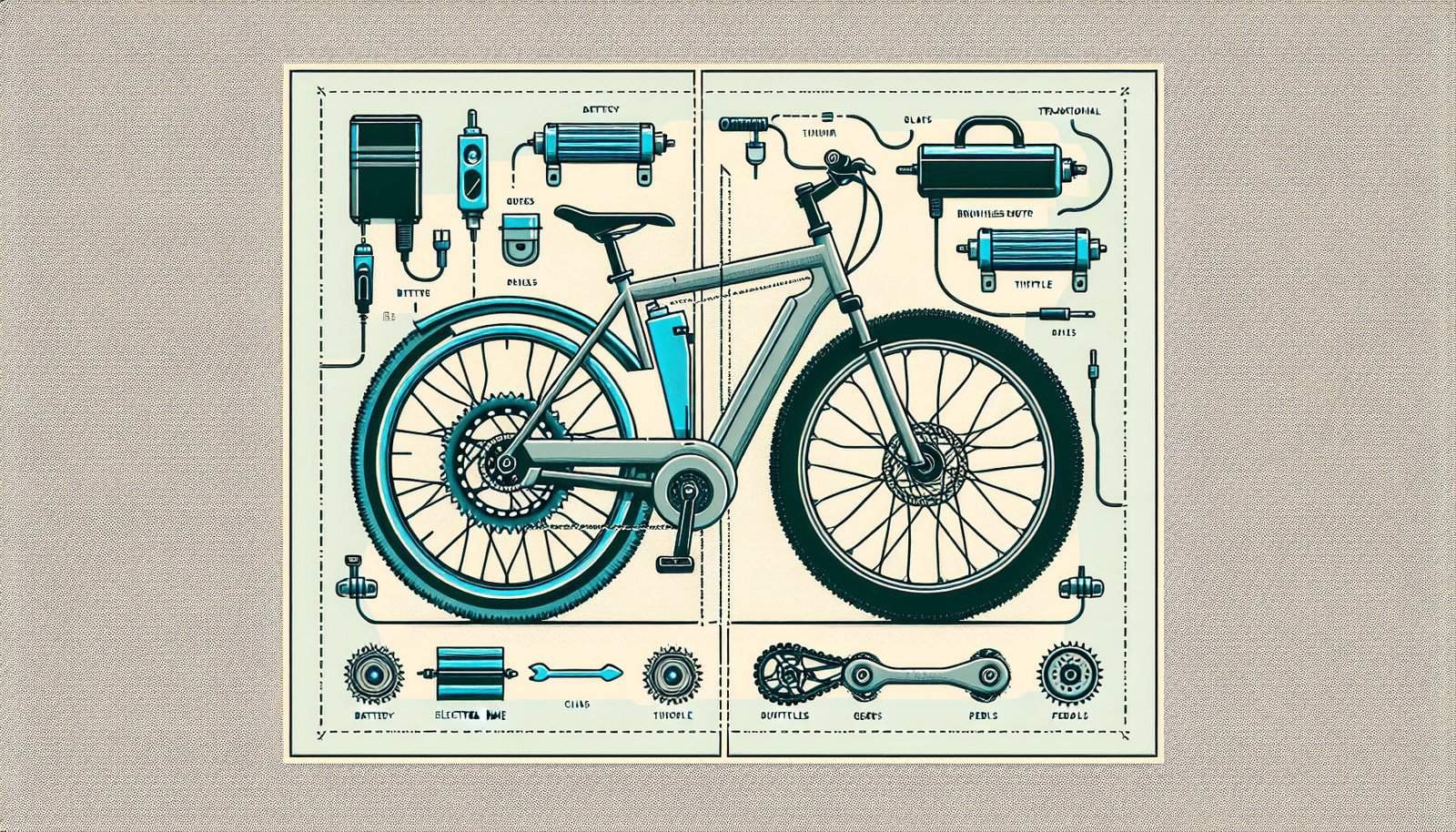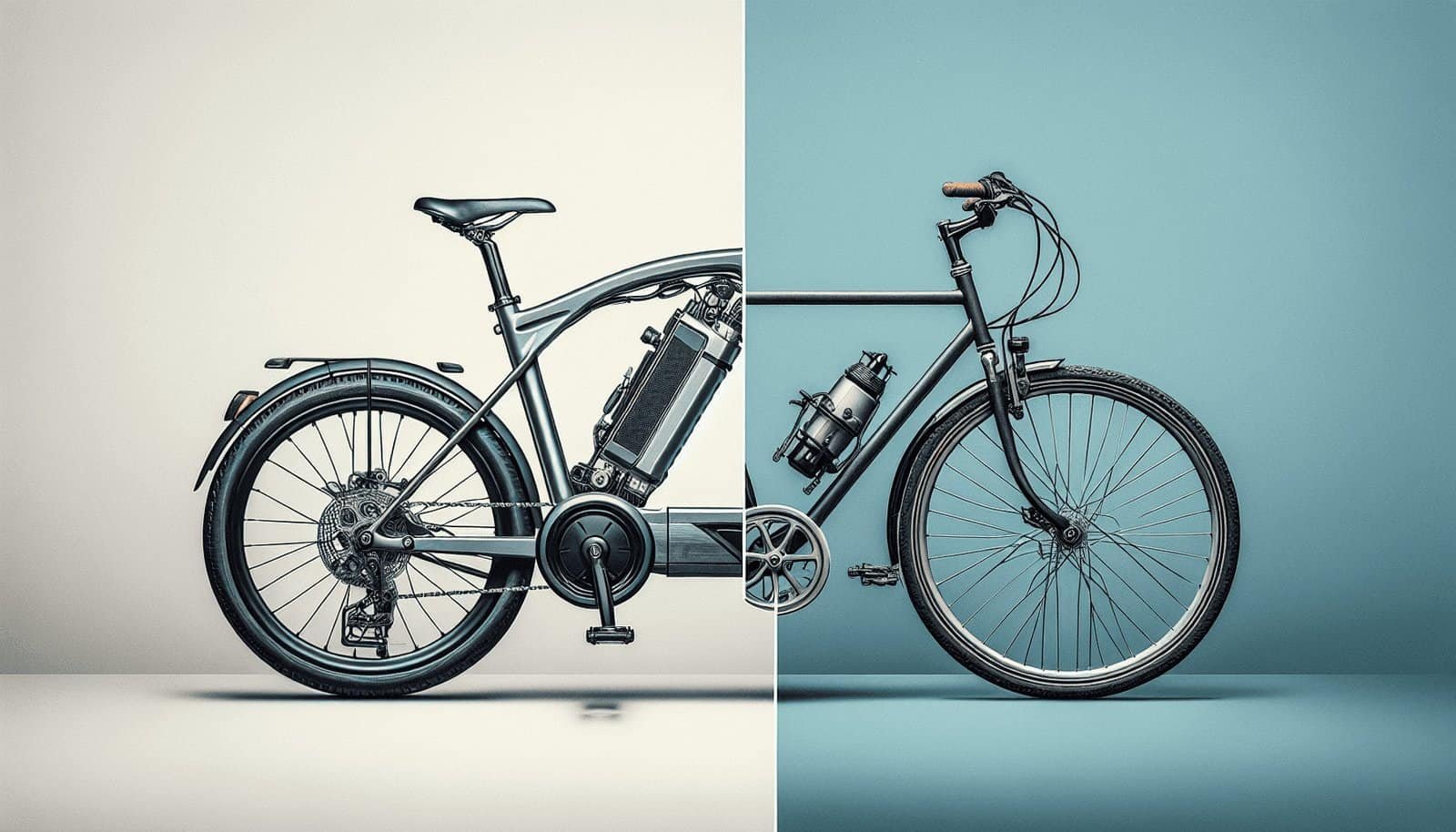In this article, we will explore the cost of maintaining an electric bike versus a traditional bike. With the rise in popularity of electric bikes, many are curious about the potential cost savings or additional expenses that come with this new mode of transportation. By examining various factors such as maintenance requirements, replacement parts, and overall durability, we aim to provide you with a comprehensive understanding of how these costs differ between electric bikes and their conventional counterparts. Discover the financial implications of owning an electric bike and make an informed decision about which option is right for you.
Initial Cost of Purchase
Electric Bike
When it comes to the initial cost of purchase, electric bikes tend to be more expensive than traditional bikes. This is mainly due to the added components and technology that make electric bikes function. Electric bikes have a motor, batteries, and a control system, which contribute to their higher price tag. However, it’s worth noting that the cost of electric bikes has significantly decreased in recent years, making them more accessible to a wider range of people.
Traditional Bike
In contrast, traditional bikes are generally much more affordable than electric bikes. They are simpler in design and do not have any specialized components like motors or batteries. This makes traditional bikes a more budget-friendly option for those who are looking to get into cycling without breaking the bank.
Cost of Replacing Parts
Electric Bike
When it comes to replacing parts, electric bikes may have a higher cost compared to traditional bikes. This is because the components of an electric bike, such as motors or batteries, can be more expensive to replace than standard bike parts. Additionally, electric bikes require specialized maintenance and repair, which can also contribute to higher costs. However, it’s important to note that electric bike manufacturers often provide warranties on the motor and battery, which can help offset some of the replacement costs.
Traditional Bike
Traditional bikes have the advantage of using standard components that are widely available and affordable. The cost of replacing parts for a traditional bike tends to be lower compared to electric bikes. Many bike shops carry a wide range of replacement parts, making it easy to find what you need at a reasonable price. Furthermore, maintenance and repair for traditional bikes are often simpler and can be done by the owner themselves, reducing the need for professional assistance and additional costs.

Battery Replacement
Electric Bike
One of the significant maintenance costs associated with electric bikes is the replacement of the battery. Over time, the battery’s capacity will degrade, resulting in reduced range and performance. The lifespan of an electric bike battery can vary depending on several factors, including the quality of the battery, usage patterns, and environmental conditions. On average, an electric bike battery can last between 3 to 5 years before needing to be replaced. The cost of a new electric bike battery can be relatively high, depending on the brand and capacity.
Traditional Bike
Traditional bikes, on the other hand, do not rely on batteries for their operation, eliminating the need for battery replacement costs. This is one area where traditional bikes have a clear advantage over electric bikes in terms of maintenance expenses. As long as the bike is properly cared for and maintained, there is no need to worry about replacing any batteries.
Regular Maintenance
Electric Bike
Electric bikes, like any other vehicle, require regular maintenance to ensure they remain in good working condition. This includes tasks such as checking and adjusting brakes, gears, and tire pressures. Additionally, it is recommended to periodically inspect electrical connections and clean the bike to prevent any damage or malfunction. While the maintenance requirements for electric bikes may be slightly higher compared to traditional bikes, they are still relatively straightforward and can be done by the owner with basic knowledge and tools.
Traditional Bike
Traditional bikes also require regular maintenance to keep them in optimal condition. This includes tasks such as lubricating the chain, adjusting gears and brakes, and checking tire pressures. Unlike electric bikes, regular maintenance for traditional bikes does not involve any electrical or specialized components, making it easier and more affordable to handle. Many bike owners find joy in maintaining their traditional bikes as it allows them to develop a deeper connection with their bicycle.

Cost of Charging/Fueling
Electric Bike
When it comes to the cost of charging or fueling, electric bikes have a clear advantage over traditional bikes. Charging an electric bike is significantly cheaper compared to the cost of fueling an automobile or motorcycle. The electricity required to charge an electric bike is relatively minimal, especially when compared to the cost of gasoline or diesel fuel. This makes electric bikes an economical choice for everyday commuting or recreational rides.
Traditional Bike
Traditional bikes do not require any charging or fueling as they rely solely on human power. This eliminates any ongoing costs associated with fuel or electricity, making traditional bikes a cost-effective option in terms of transportation. It’s important to note that while traditional bikes do not have any direct charging or fueling costs, they may still incur costs related to maintenance and repairs.
Insurance
Electric Bike
When it comes to insurance, the cost can vary depending on factors such as the value of the electric bike, where it will be used, and the rider’s history. Generally, insuring an electric bike may be slightly more expensive than insuring a traditional bike. This is due to the higher initial cost and potentially more expensive components that need to be covered by insurance. However, insurance providers have recognized the growing popularity of electric bikes and have started offering specialized policies tailored to the needs of electric bike owners.
Traditional Bike
Traditional bikes, being less expensive and having simpler designs, typically have lower insurance costs compared to their electric counterparts. In many cases, traditional bikes may not require any insurance coverage at all. However, it’s important to consider personal liability and theft protection, especially if the bike is used for commuting or in areas where theft is more prevalent. Some insurance companies offer affordable options for covering traditional bikes that can provide peace of mind for owners.

Depreciation
Electric Bike
Similar to other forms of transportation, electric bikes can experience depreciation over time. The rate of depreciation for an electric bike can vary depending on several factors, such as the brand, condition, and age of the bike. Generally, electric bikes tend to have a higher initial depreciation rate compared to traditional bikes due to their higher purchase cost. However, as electric bikes become more popular and widely accepted, the depreciation rates are expected to stabilize and even decrease in the future.
Traditional Bike
Traditional bikes also experience depreciation, but typically at a slower rate compared to electric bikes. This is mainly due to their lower purchase cost and the timeless nature of bicycle design. With proper care and maintenance, a traditional bike can retain its value relatively well, especially in the second-hand market. Many people find traditional bikes to be a good investment as they hold their value better and can be resold or passed onto others without significant loss.
Environmental Impact
Electric Bike
One of the key advantages of electric bikes is their lower environmental impact compared to other forms of transportation, including traditional bikes. Electric bikes produce zero tailpipe emissions and help reduce air pollution, contributing to cleaner and healthier cities. They also have a lower carbon footprint compared to automobiles or motorcycles, especially if the electricity used for charging comes from renewable sources. Choosing an electric bike can be seen as a more eco-friendly option for transportation.
Traditional Bike
While traditional bikes also have a positive environmental impact, they do require human energy to operate. The energy exerted by the rider is a form of personal exercise, which promotes a healthy lifestyle and reduces the reliance on motorized transport. The production and disposal of traditional bikes have a relatively lower environmental impact compared to electric bikes, as they do not involve the same level of manufacturing and disposal of specialized components like motors or batteries.

Lifespan
Electric Bike
The lifespan of an electric bike can vary depending on factors such as usage patterns, maintenance, and the quality of components. On average, electric bikes can last anywhere between 5 to 10 years. With proper care and maintenance, an electric bike can reach the higher end of this range. However, it’s important to note that the battery’s lifespan may not align with the overall lifespan of the bike itself. The battery may need replacement during the bike’s lifetime, which can extend the overall lifespan of the electric bike.
Traditional Bike
The lifespan of a traditional bike is also influenced by factors such as usage and maintenance. With regular maintenance and care, a traditional bike can last for several decades. The simplicity of the design and the absence of specialized components like motors or batteries contribute to the longevity of traditional bikes. Many people have inherited traditional bikes from previous generations, showcasing their durability and ability to stand the test of time.
Resale Value
Electric Bike
The resale value of an electric bike can depend on several factors, including the brand, age, condition, and demand. Electric bikes, like other vehicles, tend to experience a significant decrease in value after the initial purchase. However, as electric bikes become more common and accepted, the demand for used electric bikes is expected to grow. By properly maintaining and caring for the electric bike, the owner can potentially retain a higher resale value and attract buyers who are looking for more sustainable transportation options.
Traditional Bike
Traditional bikes, especially those in good condition, tend to hold their resale value relatively well. While they may not have the same demand as electric bikes on the second-hand market, their affordability and timeless design make them attractive to a wide range of buyers. Traditional bikes can be seen as a long-term investment, where the owner can potentially recoup a significant portion of their initial investment when selling or upgrading to a new bike.
In conclusion, the maintenance cost of an electric bike tends to be higher than that of a traditional bike due to factors such as the initial cost of purchase, battery replacement, and potentially more expensive repair and maintenance. However, electric bikes offer benefits such as lower charging costs, lower environmental impact, and a potentially higher resale value. On the other hand, traditional bikes are more affordable initially, have lower ongoing maintenance costs, and can last for many years with proper care. Ultimately, the choice between an electric bike and a traditional bike comes down to personal preferences, budget, and the specific needs of the rider. Regardless of which option you choose, both electric bikes and traditional bikes provide a great way to explore and enjoy the world around you while staying active and eco-conscious. Happy cycling!


